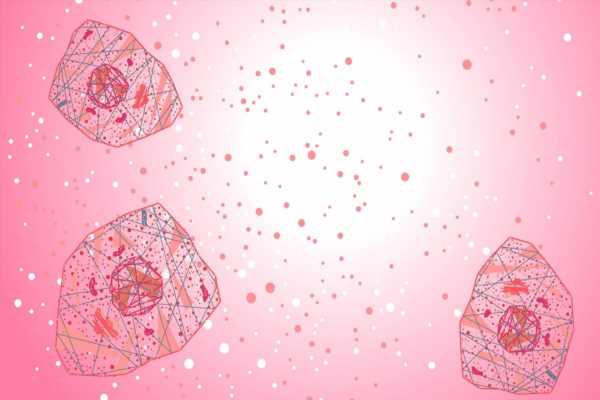Increased resistance to human interferons could be a potential driver of SARS-CoV-2 evolution
In a recent study published in PNAS, researchers compared the potency of 17 human interferons (IFNs) against multiple severe acute respiratory syndrome coronavirus 2 (SARS-CoV-2) variants. Recent SARS-CoV-2 variants of concern (VOCs) showed increased IFN resistance indicating that evasion of innate immunity or human IFNs might be a driving force for SARS-CoV-2 evolution.

Background
Previous studies have linked the emergence of SARS-CoV-2 variants to spike (S) mutations. However, studies have not discerned the role of other viral protein mutations that may inhibit the human IFNs, e.g., IFNα2 and IFNβ, which are under repurposing for coronavirus disease 2019 (COVID-19) treatment.
About the study
In the present study, researchers obtained representative SARS-CoV-2 isolates of the B, B.1, B.1.1.7, and B.1.351 lineages from beiresources.org. They incubated human alveolar type II epithelial cell line (A549)-angiotensin-converting enzyme 2 (ACE2) cells with 17 recombinant IFNs overnight in parallel and triplicate. They infected these cells with a non-saturating virus dose for 2 hours.
They used a quantitative polymerase chain reaction (qPCR) assay to determine the amounts of virus produced 24 hours after infection. The researchers also evaluated the qPCR assay against a VeroE6 plaque assay using triplicate serial dilutions of SARS-CoV-2 isolate B.1.351, with one plaque-forming unit detected by this assay corresponding to ∼900 SARS-CoV-2 nucleocapsid 1 (N1) copies.
Further, the team used immunofluorescence to quantify the viral copy numbers in primary airway epithelial cells infected with different SARS-CoV-2 variants. Lastly, they generated a heatmap to visualize the antiviral potency of all 17 IFNs against the five SARS-CoV-2 isolates.
Study findings
While the IFNβ and IFNλ1 doses did not substantially affect cell viability, a 2-picomolar (pM) concentration maximally distinguished the antiviral activities of IFNβ and IFNλ1, two widely divergent IFNs. Although the authors observed a strong correlation between virus titers obtained using both the assays, compared to the VeroE6 plaque assay, the qPCR assay robustly distinguished the antiviral activity of the different IFNs.
All 17 IFNs showed antiviral activities against SARS-CoV-2, with an observed correlation between IFN potencies against all five isolates. The three IFNλ subtypes exhibited none to less than two-fold antiviral activities compared to most IFN-Is. IFNα8, IFNβ, and IFNω were the most potent, the type III (λ) IFNs were the least potent, and IFNα5, IFNα17, and IFNα14 showed moderate potency.
The heatmap data confirmed that the IFN resistance of emerging SARS-CoV-2 variants was especially striking compared to the ancestral USA-WA1/2020 strain, with these exhibiting 25- to 322-fold higher IFN-I resistance. However, the study experiments did not reveal how different IFN-I doses impacted the replication of all SARS-CoV-2 strains. It also remained unclear whether the emerging variants were resistant to IFN-IIIs. Inhibition curves for five IFNs showed that IFNλ1 had 100-fold higher half-maximal inhibitory concentration (IC50) than IFNα2, which exhibited 14-fold higher IC50 than IFNβ, IFNα5, and IFNα8. Both IFNβ and IFNλ1 similarly inhibited the lineages A and B isolates.
Interestingly, both IFNβ and IFNλ1 did not attain maximum inhibition against the alpha VOC, saturating at 15- to 20-fold higher levels than the lineage B isolate. Notably, Omicron had the highest levels of residual virus replication at the highest doses of one of the most potent IFNs, IFNβ.
Conclusions
The study demonstrated antiviral potency for the diverse human IFNs in a specific order, indicating how SARS-CoV-2 evolved after host switching to become more resistant to human IFNs. The study findings could help identify IFN subtypes that might be most useful in treating early SARS-CoV-2 infections. For instance, for SARS-CoV-2, higher doses of IFNλ were required to achieve a similar antiviral effect in vivo as the IFN-Is and IFNβ showed potential as a therapeutic against COVID-19.
Among IFNα subtypes, IFNα8 showed an anti-SARS-CoV-2 potency similar to that of IFNβ. It also exhibited high antiviral activity against human immunodeficiency virus 1 (HIV-1), raising a potential treatment approach for both viruses. While IFNα6 restricted HIV-1, IFNα subtypes were the weakest against SARS-CoV-2. Conversely, IFNα5 strongly inhibited SARS-CoV-2 but weakly inhibited HIV-1. The genes that limit IFN responses in emerging SARS-CoV-2 variants suggested that IFNs may also influence SARS-CoV-2 evolution. Similarly, previous studies with HIV-1 suggested that IFNs can shape the evolution of pandemic viruses.
Overall, the current study reinforced the importance of continued genomic surveillance of SARS-CoV-2 to assess emerging variants evading the host IFN responses. Indeed, the role of the innate immune response in driving SARS-CoV-2 evolution could have implications for IFN-based therapies.
- Kejun Guo, Bradley S. Barrett, James H. Morrison, Kaylee L. Mickens, Eszter K. Vladar, Kim J. Hasenkrug, Eric M. Poeschla, Mario L. Santiago. (2022). Interferon resistance of emerging SARS-CoV-2 variants. doi: https://doi.org/10.1073/pnas.22037601 https://www.pnas.org/doi/10.1073/pnas.2203760119
Posted in: Medical Science News | Medical Research News | Disease/Infection News
Tags: ACE2, Angiotensin, Angiotensin-Converting Enzyme 2, Assay, Cell, Cell Line, Coronavirus, Coronavirus Disease COVID-19, covid-19, Enzyme, Evolution, Genes, Genomic, HIV, HIV-1, Immune Response, immunity, Immunodeficiency, in vivo, Interferons, Omicron, Pandemic, Polymerase, Polymerase Chain Reaction, Protein, Respiratory, SARS, SARS-CoV-2, Severe Acute Respiratory, Severe Acute Respiratory Syndrome, Syndrome, Virus

Written by
Neha Mathur
Neha is a digital marketing professional based in Gurugram, India. She has a Master’s degree from the University of Rajasthan with a specialization in Biotechnology in 2008. She has experience in pre-clinical research as part of her research project in The Department of Toxicology at the prestigious Central Drug Research Institute (CDRI), Lucknow, India. She also holds a certification in C++ programming.
Source: Read Full Article
